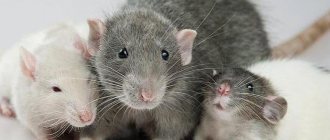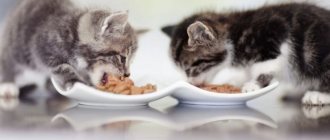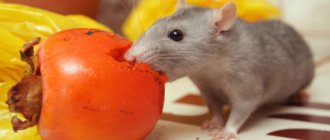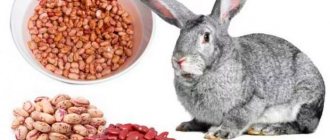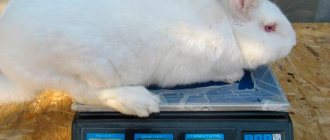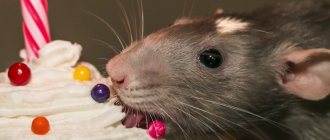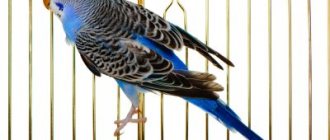When getting a British breed kitten, you need to take into account all the care needs of this breed. From the first days of life, it is necessary to monitor the weight of a British kitten month by month. This indicator is very important for their breed, because it is with its help that the healthy development of the baby is determined. Following the development of a British pet is very important and interesting. Monitoring body weight and height is necessary in order to identify the presence of pathologies at an early age.
British kitten weight table by month
The weight of a British cat, as can be seen from the table, changes unevenly with age: the animal’s muscle and fat mass grows most rapidly in the first month, then slows down. At one year of age, the British pet actually reaches its maximum weight, and the weight stabilizes at 2.5 years.
| age | female, kg | male, kg | peculiarities |
| newborn | 0,07–0,15 | 0,08–0,15 | newborn kittens of the British breed are quite large |
| first week | 0,1–0,25 | 0,25–0,3 | a nursing cat needs to be well fed, food must be rich in vitamins and balanced, so that the cubs develop fully |
| second | 0,15–0,35 | 0,35–0,4 | by this time, British kittens should weigh approximately 1.5 times more than at birth, the eyelids of large and developed cubs open |
| third | 0,2–0,4 | 0,4–0,65 | you can gradually introduce complementary foods, especially if the litter is large and the kittens are weak |
| first month of life | 0,25–0,6 | 0,55–0,7 | as complementary food, they give boiled beef or chicken minced in a meat grinder or blender, sea fish fillet, soft canned cat food, cottage cheese, boiled yolk |
| 2 months | 0,45–0,9 | 1–1,7 | |
| 3 | 1–1,5 | 1,5–2,5 | if the cubs are still fed with mother's milk, then the feeding should be more balanced and rich in vitamins |
| 4 | 1,8–2,4 | 2,2–3,9 | |
| 5 | 2,2–2,9 | 2,6–4,3 | Before becoming an adult, a British kitten must gain the same number of kilograms as at 5 months of age |
| 6 | 2,3–3,6 | 3–5,4 | |
| 7 | 2,4–3,8 | 3,3–5,6 | |
| 8 | 2,5–4 | 3,5–6 | |
| 9 | 2,5–4,2 | 3,8–6,4 | |
| 10 | 2,5–4,3 | 4,1–6,6 | |
| 11 | 2,5–4,3 | 4,2–6,7 | |
| year | 2,5–4,5 | 4,5–7 | Once a British cat has become mature, it is prohibited to give fatty meats, smoked meats, fatty dairy products, river fish (they may contain helminths), bones (they are poorly digested in the stomach) |
How much should an adult British cat weigh?
You should not think that the weight of an adult British cat does not change. The weight indicators of mature individuals are insignificant, but still increase. Moreover, castrated individuals show a more rapid increase in body weight.
If a non-sterile one-year-old pet has an average weight of 4.5 kg, then a castrato weight norm is 3–6 kg for a female, 5–9 kg for a male.
NOTE! An adult British cat, provided it receives high-quality balanced food, gains weight by 50–100 g per day.
The table shows the normal weight of adult British cats and cats.
| age, years | female, kg | male, kg | height at withers, cm |
| 1 | 2–4 | 4–6 | 15–22 |
| 2 | 2,5–4,5 | 4,5–4,8 | 18–25 |
| 3 | 2,8–4,8 | 4,7–7 | 22–27 |
| 4 | 3,8–5 | 5–7,5 | 25–30 |
| 5 | 4–6 | 5,5–8 | 28–33 |
A healthy British cat should have a proportionate body. The ribs, pelvic and sternum bones should not protrude. The waist in the absence of obesity in British pets is clearly visible. The fat layer is moderate, through it you can feel the abdominal organs and chest.
INTERESTING! British cats with a solid coat color weigh on average more than their patterned counterparts. And this is the breed norm.
How to visually understand that your pet has a normal weight
A cat's normal weight can be easily determined by its proportions. In the absence of deviations, the animal’s body corresponds to the following indicators:
- clearly defined waist;
- a toned stomach with a thin layer of fat;
- poorly visible ribs and pelvis that can be palpated.
A predominance of muscle mass over fat is also recommended. It is easy to identify in short-haired representatives due to its more pronounced relief.
What are the dangers of being underweight?
In emaciated British cats, the ribs, sternum and pelvic bones protrude greatly, the limbs are thin, frail, and the stomach is sunken. Due to lack of nutrients, the hair sheds greatly. If you feel the sternum, there will be no fatty layer on the bones.
The most common reason that a kitten does not recover is a lack of mother's milk. This happens in a large litter, when not all cubs get their mother's nipple during feeding.
The owner must ensure that each kitten eats. If a cub lags behind its brothers in weight, then it needs to be moved more often to its mother’s nipples.
RECOMMENDATION! It happens that a mother cat’s milk disappears. In this case, kittens must be pipetted with high-fat, unsweetened concentrated milk.
If, despite all measures and efforts, the weight of the British kitten does not increase, then this is a signal of illness. The pet must be taken to the veterinary clinic immediately.
Sometimes owners note that in 8-9 month old British kittens the weight stays the same, or even drops slightly. There is no need to worry, the reason is hormonal changes in the body associated with puberty.
An adult cat's weight should not drop. In an exhausted animal, the functioning of internal organs is disrupted and mental disorders occur. The cat becomes nervous, anxious, and moves little.
The following problems may occur due to lack of weight:
- Violation of the body's thermoregulation. A British pet will feel cold, even if the temperature is comfortable. Cold weather becomes a real torment. The cat often catches a cold; at the end of autumn and winter it should not be allowed into the yard.
- Weakening of the immune system. Due to a deficiency of nutrients (especially proteins), antibody synthesis fails in the body. The cat becomes susceptible to inflammatory infectious diseases.
- Deterioration of the condition of the skin and coat. The fur becomes dull and the pet sheds profusely. Alopecia is often observed - the formation of bald patches in different parts of the body. The skin becomes dry and flaky.
- Reproductive dysfunction. In an exhausted animal, metabolism deteriorates, hormonal disruption occurs, which makes conception impossible. If the cat is already pregnant, she may have a miscarriage. Or the mother may devour the newborn cubs.
IMPORTANT! With a deficiency of vitamins, mineral elements and nutrients, British cats develop pancreatitis, cholelithiasis and urolithiasis, and defecation is impaired.
What are the dangers of obesity?
You can tell that a cat is obese by its sagging belly. Because the fat layer is too thick, the costal and vertebral bones cannot be felt. An obese animal moves slowly and ignores active activities.
ATTENTION! An obese cat needs to be examined at a veterinary clinic for prevention, as there is a high probability of developing diseases of the heart and vascular system, as well as inflammation of the joints.
Excess weight greatly affects the health of a British pet. The most common pathologies:
- increased blood pressure, development of atherosclerosis;
- lethargy, powerlessness, drowsiness;
- hormonal disbalance;
- blurred vision due to increased intraocular pressure;
- development of diabetes;
- the appearance of gout, osteoarthritis;
- disruption of the digestive tract;
- hard breath;
- thirst;
- deterioration of metabolism;
- weakening of the immune system.
Tips for maintaining normal weight
To keep a British cat's weight within normal limits, owners need to maintain a balanced diet:
- add a small percentage of cereals and vegetables to dry and soft food;
- add boiled vegetables to the food (various varieties of cabbage, beets);
- meat and fish should only be lean, they should be included in the menu daily;
- Among the cereal products, it is best to give your cat oatmeal, millet, and rice;
- You need to cook porridge for your pet in water, without adding sugar and salt.
A kitten is taught to eat cereals and vegetables from an early age. The diet of an adult British cat should consist of 10–15% vegetables and cereals, 85–90% meat and fish.
Also, we must not forget about regular physical activity. To prevent a cat from developing obesity, the owner must engage it in active games every day.
High-quality and balanced nutrition, an abundance of vitamins and nutrients, an active lifestyle - these are the main factors for the full development of a British pet.
The owner should weigh the kitten at the same time every day in order to notice weight deviations in time. If the development of the “British” does not correspond to his age, then there is no need to hesitate in going to the veterinarian.
Source
Normal weight of kittens
Immediately after birth, based on the kitten’s build, you can understand what build it will be in the future and what size it will reach when it grows up.
Good care and good nutrition will have a great impact on the baby's development. But to find deviations in weight, you need to know the norms and regularly monitor them.
- Weight in the first days after birth. Newborns can weigh 70-130 g. By the second week, kittens gain 110-150 g. If the kitten weighs less, this may indicate that the nursing cat is not receiving the required amount of vitamins from food.
- Weight in the second week after birth. At this time, the weight can gain another 210 g on average. Activity appears, eyes may begin to open. According to the breed standard, a kitten in this period should weigh 420 g.
- Weight until the end of the first month after birth. At this time, the owner can begin to introduce complementary foods (boiled chopped chicken, beef, canned cat food, cottage cheese, boiled yolk), especially for babies with a large number of kittens in the litter. During this time, the “fluffy” should gain another 250 g. Under good conditions, its weight during this period can reach 500 g, at the beginning of the fifth week - 600 g, in two months - 700-1500 g.
- Weight until the end of the third month after birth. With proper care and nutrition, a kitten can weigh more than 1 kg by three months. Every day he gains 100 g. According to the norm, during this period the weight of a kitten on average reaches 1.5-2 kg for a cat and 1-1.5 kg for a cat. If during this period the kitten still receives mother's milk, it is necessary to ensure the supply of vitamins and provide a variety of complementary foods. You should not give kittens at this age natural pork, smoked meats, fatty dairy products, chicken with bones and river fish.
- Weight until the end of the fourth month after birth. By standards, kittens at this age weigh 1.7-2.4 kg (females), and males 2.1-3.9 kg. Now the kitten looks more like an adult animal. Depending on diet and heredity, a kitten can gain 2 kg. You need to take a closer look at a kitten weighing more than 4 kg: perhaps the amount of food can be reduced.
- Weight until the end of the fifth month after birth. By the beginning of the fifth month, a cat can weigh 2.2-2.9 kg, and a female cat can weigh 2.6-4.5 kg. Now the period of growing up begins, and by the time the kitten finally becomes an adult, the kitten will double its weight.
First month
This period of a pet’s life is the most difficult. In the first days of life, it becomes clear how strong the cat's physique will be when he grows up, what weight he can reach. Scientists have experimentally proven that nutrition and care in early childhood determine the health of an animal in the future. If the baby did not eat well in the first days of life, this will most likely affect his weight in the future.
First days of life
Kittens of the British and Scottish breeds weigh relatively a lot. Adult animals of these breeds are quite large, but even kittens are born real heavyweights.
Newborn kittens weigh from 70 to 130, but by the second week of life they become almost 1.5 times heavier (110-150 g). The babies are still blind, inactive, sleep a lot and eat a lot.
During this period of development, you need to make sure that the mother receives enough vitamins (more than she herself needs), because kittens need good breast milk with a balanced set of nutrients.
Second week
Over the next few days, the British kitten gains weight and by the end of the second week its body weight should already be 210 grams. Normally, it can even reach 420 grams . At the same time, babies become more active and mobile, some “early” babies even open their eyes by the end of the second week.
Up to a month
From the third or fourth week (depending on the rate of development of the British cat), you can start feeding. But not all foods can be eaten by him - we recommend that you first read what to feed your Briton.
At the age of one month, kittens typically gain 250 grams of weight. Large, fast-growing babies can reach a maximum of half a kilogram, and this is quite normal.
Start of complementary feeding
The first dishes that can be given to a British baby are:
- crushed canned cat food;
- chopped boiled beef or chicken;
- boiled sea fish;
- cottage cheese;
- boiled egg yolk.
From the first days of complementary feeding, carefully observe how your baby eats and how he reacts to food. If you prefer to feed your pets food, you should not skimp on it, because as a result, this can provoke the development of urolithiasis.
With proper nutrition, warmth and care, by the beginning of the fifth week, a British kitten should weigh about 600 grams or even more . In a week, the kitten should gain about 100 grams more, and by two months its body weight will already be from 700 grams to 1.5 kg. This weight is not typical for all breeds, but only for the British and Scottish, which are considered to be quite large cats.
A table of the weight of a British kitten by month will also help you, which shows all the norms for this breed. It is recommended to keep a weight diary and use it to monitor the development of the Briton.
Kittens weight
After the baby is born, you can see how strong and big he will grow.
For a newborn British kitten, the normal weight is in the range of 70-130 g. Already in the second week, the kitten can reach a weight of 150 g. In two weeks, the baby grows almost one and a half times, which means that it is the first period of his life that will greatly influence the future sizes.
The main thing is to pay enough attention to nutrition. A cat that feeds growing offspring must be well fed with high-calorie food and vitamins in order to be able to fully feed the kittens with milk.
After the second week, the baby already weighs 210 g - this is the average. However, a kitten can weigh much more - 450 g (upper norm). He becomes more active, his eyes may even open.
At the end of the first month of life, complementary foods can be introduced. It is permissible to feed the baby with boiled and finely chopped beef and canned cat food, sea fish, chicken, cottage cheese (a very useful product for strengthening bones) and hard-boiled eggs (yolks only).
In the first month of development, the kitten should grow to 250 g, although a normal weight is even 600 g. Well, in two months, depending on heredity and nutrition, the kitten will weigh from 700 g to 1.5 kg.
Over the course of three months of life, the kitten must gain at least 1 kg of weight. If not, he may have a health problem or is not getting enough nutrition.
During this period, the kitten can become almost 100 g heavier every day. A cat at this age should weigh in the range of 1-1.5 kg, and a cat - 1.5-2 kg.
If babies are still fed breast milk, they need to introduce vitamins and a more varied diet into their diet. It is not recommended to give them smoked meats, pork and other fatty meats, fatty cottage cheese, river fish and, most importantly, meat with bones. The best option is canned cat food with a good range of vitamins and nutrients.
After 4 months of life, cats gain up to 1.7-2.4 kg, and males - from 2.1 to 3.9 kg. The pet becomes even more like an adult animal. If his weight exceeds 4 kg, it is necessary to reduce the amount of food, since a cat that begins to gain weight at an early age may have many health problems in the future. It may be worth contacting a veterinarian - he will prescribe the right diet and vitamins.
After five months of life, the male cat should weigh 2.6-4.5 kg, and the male cat should weigh 2.2-2.9 kg. Before becoming an adult cat, the pet will have to gain the same amount of mass.
At the sixth month of life, the kitten develops fairly strong teeth. Sexual development begins. It would also be a good idea to think about preventing worms. The quantity and food for kittens can be gradually reduced.
In the seventh month, the pet may shed hair, especially if it spends a lot of time outside. Hairballs appear everywhere, which the kittens regurgitate.
At the eighth month of a kitten’s life, the owner is faced with the question of whether to castrate/sterilize or not. It is better to carry out this procedure for cats at the 8th month, for cats no later than a year.
In the ninth month you need to get vaccinated. They are already sufficiently formed so that medication does not have a detrimental effect on them.
At the tenth month of life, food for adult cats should be introduced into the diet, and the children's menu should be abandoned. Now they can be given dry food.
At the age of 11-12 months of life, kittens begin to play actively, stop creating inconvenience for others and like to often release their claws. The weight of cats at one year of age and in adulthood is given below (castration/sterilization also plays a role).
Table
The pet is three months old
Watching how a Briton grows and develops is very interesting. But this is also useful, because sometimes it allows us to identify pathologies at an early stage of development. And for breeders, this is also a way to track the purity of the genetic line and keep their pet at an ideal weight for exhibitions and competitions.
If you fed him correctly, a kitten at 3 months weighs from 1 kg. The normal weight of a British cat is 1-1.5 kg. For males this figure is 1.5-2 kg.
The kittens are already quite large, and every day they can gain 100 grams, thus becoming even more massive. This is good for the development and normal weight of the British dog, because adult animals can reach 8 kg in weight.
British kittens aged 3 months © shutterstock
It is important that at this age your pet eats a balanced diet. If he has not yet been weaned off his mother's milk, the amount of vitamins in his mother's food needs to be increased, and the feeding should become more varied.
Which food to choose
At this age, owners must decide what they will continue to feed their pet. Watch what a British person eats with great pleasure. If you choose store-bought food, give preference to good food, which can cost a lot. An excellent option is the products of the American company Hills. Also high-quality food from such manufacturers as Innova EVO and Orijen.
If you decide to stick to natural food, it’s worth remembering the foods that you should never give to a British breed pet:
- all types of river fish;
- pork meat;
- smoked sausages and other “human” food;
- fermented milk products with a high fat content (sour cream, cream, etc.);
- chicken meat with bones.
Parameters of an adult cat
After the cat has grown and formed, its weight should be from 2.5 to 5.5 kg, and that of the cat - from 4.5 to 8 kg. At this stage of life, weight also depends on “additional” procedures: for example, a sterilized cat can gain up to 6 kg, and a cat can gain up to 9 kg.
British cats reach their adulthood and stop gaining weight at 3-4 years of age. It is worth noting that cats with solid colors tend to have a higher body weight than “patterned” British cats, and this is normal.
You can determine whether a cat has a normal weight by simply feeling it lengthwise: the pet’s subcutaneous layer of fat should be barely noticeable and lightly cover the ribs, which provides good thermal insulation without reducing mobility and activity. The presence of fat in the intercostal spaces indicates that the cat is overweight. It is worth remembering that the British are strong and powerful animals, quite large, but by no means fat.
Characteristics of British cats
The British Shorthair cat is valued not only for its cuteness and intelligent, kind look. This “fur” miracle has a calm temperament and good health.
The British are great for business people who spend most of their lives at work.
Pets love to retire for long periods of time so that no one disturbs their sweet sleep. However, this characteristic of a cat being like a teddy bear does not mean that it can be treated like a toy. The Briton will never allow his dignity to be humiliated.
Character and habits of British cats >>
Many owners complain that cats of this breed are unsociable and rarely allow them to be cuddled. But this does not mean that they do not show their love and affection for their owner. It's just that British cats are more restrained in expressing their feelings and are quite self-sufficient, unlike other breeds.
But information about the aristocratic behavior of a Briton from an early age pleases any “cat person.” After all, these pets are very clean and will never allow themselves to relieve themselves in the wrong place. In addition, British cats love to take care of their appearance on their own - they can spend half of their active time on licking and washing themselves in order to always look respectable and radiate charm and charm!
Why is it important to control your pet's weight?
Caring owners must keep a diary of their kittens' weight from the very first days of their life. This allows you to monitor the development of your pet. It is very difficult to control based on visual parameters: that is why the measurement is based on weight. It is recommended to have accurate electronic scales in the house and weigh babies every day in the first weeks of life, and later - at least once a week. The weight of a newborn baby must be at least 60 grams, otherwise you should immediately contact a veterinarian. Such a baby must be fed with special care in the future.
How to weigh your pet correctly
You can find out how much a cat weighs at a veterinarian's appointment or right at home. In the second case, you will need electronic scales. Mechanical ones are suitable only for the calmest pets. In other cases, the arrow will constantly jump, not having time to lock on.
The most reliable option is to weigh it in your hands, but you can also put the animal in some kind of container or secure it in a bag. In the first case, it will be necessary to subtract your own weight from the resulting figure, and in all others, a lot of additional devices.
Why doesn't the animal gain weight?
During the early stages of life, a kitten should gain weight very quickly, so the owner can easily notice any growth problems, especially compared to other kittens. If the kitten is not growing, you should pay attention to the following reasons:
- In the case of a large litter (more than five kittens), the baby may not have enough mother's milk or even a free nipple. It is worth paying attention to how well and often he eats, and also apply it to his mother’s nipple yourself.
- If all the kittens are actively suckling their mother, but are growing poorly, it is worth increasing the amount of food for the mother, adding vitamins and calories.
- If everything is fine with nutrition, but the kittens are still not gaining weight, they should be taken to the veterinarian
Proper nutrition and a sufficient amount of vitamins are the basis for the normal and rapid development of a pet. If the weight of babies at a certain stage of life differs greatly from the indicators given in the table, you should consult a veterinarian.
Source

